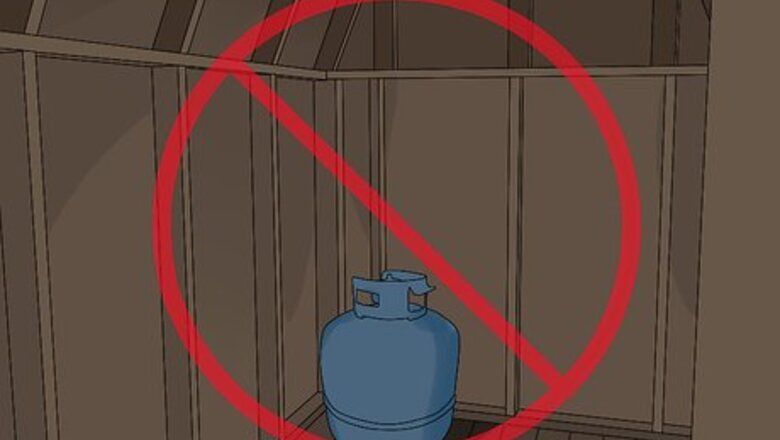
views
Keeping Your Tank Safe
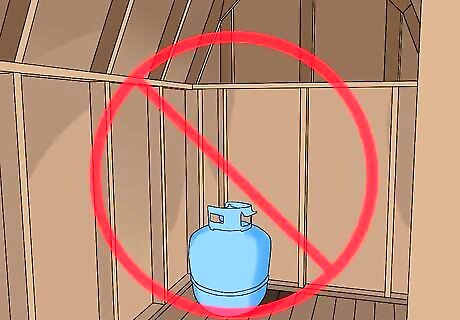
Don't leave your tank inside or in a shed. If gas were to leak, it would contaminate the area and make it dangerous. Even the spark of starting a vehicle or lawnmower could ignite a propane leak and cause a terrible accident. If you live in a snowy area, mark the location of your tank in case it gets buried so you can easily find it and clear away the snow. Preferably, the tank should be stored under a waterproof cover, inside a tank box sold for that purpose, or under an open-air cover, in order to minimize rust and tank damage.
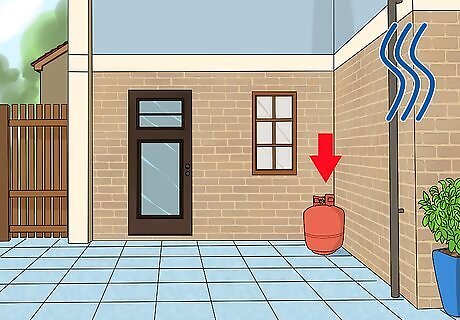
Store the tank in a dry, well-ventilated outdoor area. Make sure that the area is flat so the tank doesn't tip over or roll away ,and the area is mostly shaded. Consider using one of the lower shelves on an outdoor shelving unit mounted to a secure wall. Always store a tank upright, since the over-pressure vent must be in contact with the propane vapor, not the liquid. Keep your propane tank out of enclosed spaces. Gas may leak and could make the area dangerous.
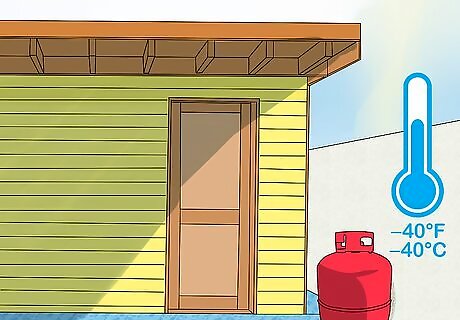
Keep your tank above −40 °F (−40 °C) in cold months. As the temperature drops, the pressure in your tank will lower. Make sure the propane tank is in a sunlit area so that it can warm up everyday. But see below regarding warmer months! Keep your tank full so the pressure does not drop too low. Don't cover your propane tank to try to insulate it. This only blocks the sun and could lower the pressure more. Never use a heater or electrical device to warm up your tank.
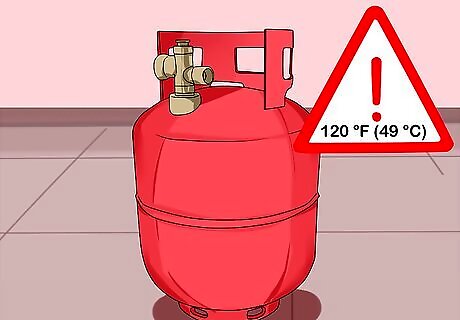
Avoid keeping your tank in temperatures above 120 °F (49 °C). As the temperature rises, the pressure inside your tank rises, too. Don't leave your tank in the sunlight during the hottest months. Try to find an area that has a lot of shade instead. Keep your tank out of the rain, to avoid rusting and tank damage.. Propane tanks have a release valve that will help relieve pressure if temperatures are consistently high. The built-up pressure will leak out and dissipate into the air. To work properly and not leak liquid propane, the tank must remain upright. Make sure there are no sources of ignition near the tank so excess pressure does not light.
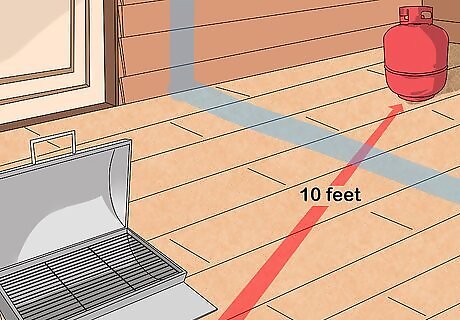
Place your tank 10 feet (3.0 m) away from flammable materials. This includes open flames or any electrical device. Do not store any extra tanks close together or near your grill. If one tank happens to ignite, you do not want other tanks nearby to ignite as well.
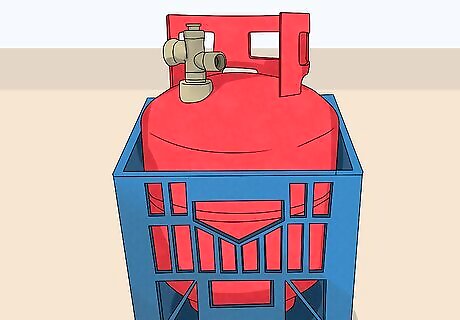
Use a milk crate to hold the propane tank upright. Keeping the tank upright ensures that the valve does not get damaged and gas doesn't leak. A standard-sized milk crate should hold a 20 pounds (9.1 kg) tank that's used for gas grills. Special platforms to hold propane tanks are also sold in home and garden stores or online. Use a platform if your tank does not fit inside of a milk crate. Build a barricade around the tank with cinder blocks or bricks, but make sure to leave the valve and handles exposed.
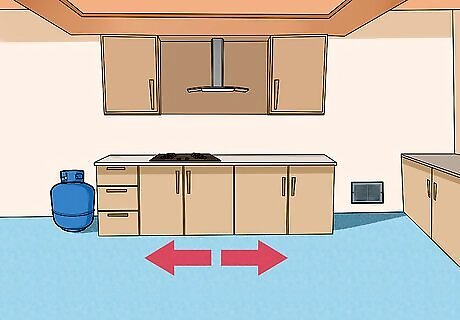
Keep your tank away from the vents and windows of your home. Never store or use your tank inside the home! Look for exterior vent grates anywhere near your propane tank. Propane gas is heavier than air, so it will sink closer to the ground and may go into vents or basement windows. In case of a leak, you do not want to place tanks in an area where it could easily enter your home and contaminate the air, and which might create an explosive mixture situation. Never store your propane tank near air conditioners, radiators, or heat vents since they could pull the gas into your home. If propane leaks into your home, evacuate the area immediately and call your local officials.
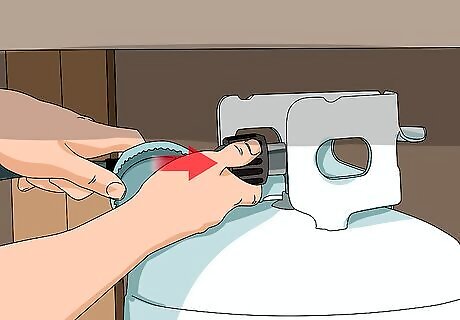
Attach your tank to your grill for an easy storage option. Turn the valve off (on top of your tank), and turn all grill valves to the "off" positions. Use a grill cover to protect it from the elements and direct sunlight. This makes it easier for you to use the grill at any time of the year. If you store your grill in a shed or garage, remove the tank and leave it in a suitable place outside.
Checking the Quality of Your Tank

Ensure the valve is closed when the tank is not in use. Turn the valve clockwise until it is hand-tight. This helps prevent any possible gas leaks from escaping the tank. If you smell something similar to rotten eggs or a skunk's spray, propane may be leaking from your tank; check the valve to ensure that it is turned off snugly. If there is still evidence of a leak, have the tank examined by a professional to determine whether it needs to be repaired or replaced. If the leak is only evident when the valve is on, check for a leak at the line connection to the tank (be sure the connection is tight) or for leaks along the length of any flexible line (where it may have been mechanically damaged or chewed by a rodent). If a fuel line is damaged or the connection to the tank cannot be properly sealed, replace it.
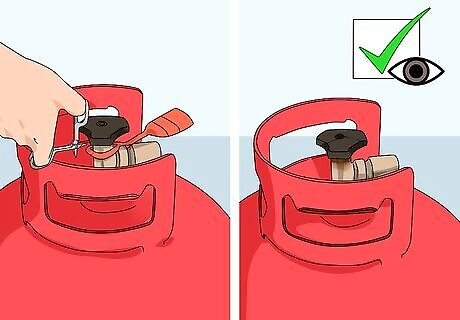
Remove any shrink-wrapped plastic label to look for rust. Use a pair of scissors to cut the plastic wrap-around off of the tank. Water can get trapped underneath the sleeve and cause rust to form. Rust damage can ruin the integrity of the tank, making it more prone to damage. Save the label since it will have important graphics and handling instructions which you may want to consult later on.
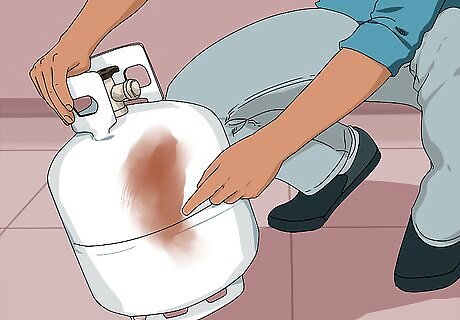
Inspect the tank for dents or peeling paint. Any external damage could ruin the integrity of the propane tank overall. If you find signs of rust, dents, or peeling paint, replace your propane tank before you store it. Do not fill a tank that has been weathered or damaged.
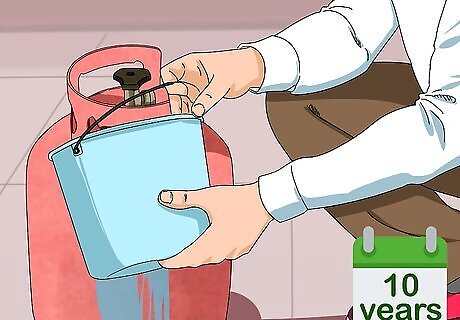
Have any tank over 10 years inspected by a professional (the tank is stamped with an expiration date). An expired propane tank needs to be re-qualified and should be checked that it's still safe for you to use. Even if there doesn't seem to be any damage, it may have internal wear and tear. After an initial inspection, have your tank checked every 5 years afterward. The inspector should re-stamp the tank with a new expiration date.
















Comments
0 comment